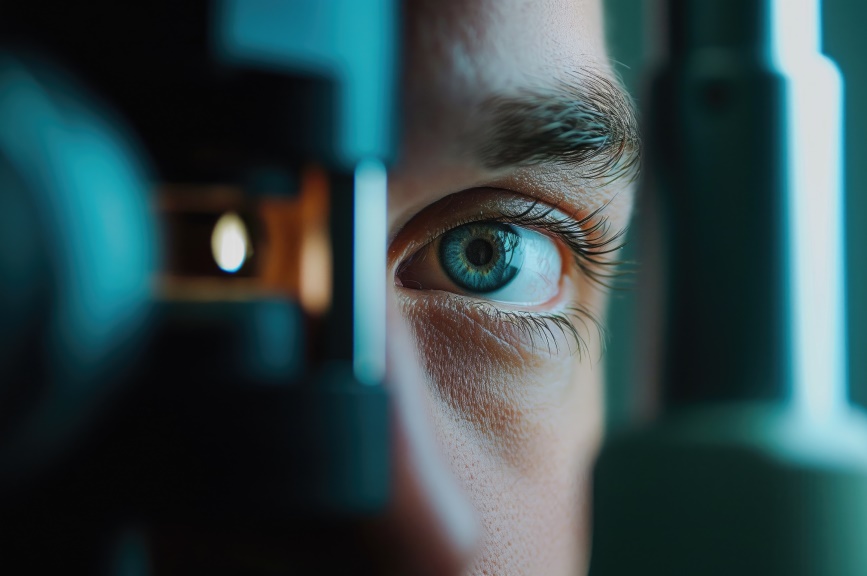
Common Eye Surgery Options — What’s Best Based on Your Symptoms?
Scientists and curious minds throughout history have developed extraordinary methods to treat complex eye conditions and diseases. These efforts have enabled people to regain and maintain their vision and prevent total blindness.
With all the procedures available today, it may help to know what kinds of treatments are available based on specific symptoms. This article discusses the most common types of eye surgery to help you understand what type you may need.
Refractive Surgery
These operations repair refractive errors involving the cornea. As long as you don’t have an eye disease, you should be cleared to have surgery. Most procedures can reduce or even totally eliminate your dependence on glasses or contacts.
Common refractive errors:
· Astigmatism — blurry vision at a distance
· Farsightedness
· Nearsightedness
· Presbyopia — aging eyes
Laser in-situ keratomileusis (LASIK), photorefractive keratectomy (PRK) and small incision lenticule extraction (SMILE) are all common refractive treatments that use a special cutting laser to reshape the cornea. Read SMILE, LASIK or PRK Surgery: Which is Best? to understand their specific differences.
Glaucoma Surgery
Glaucoma occurs when fluid builds up and damages the optic nerves in the back of your eyes. Vision loss cannot be recovered, but a procedure can help slow or prevent further loss.
Symptoms of glaucoma:
· Loss of central and peripheral vision
· Drusen — tiny yellow or white deposits within the retina
· Blurred vision
· Eye redness, pain or pressure
· Headaches
· Rainbow-colored halos around lights
· Nausea and vomiting
Common operations:
· Argon laser trabeculoplasty (ALT) – The surgeon aims a thermal laser to open clogs in your eye to make drainage more effective.
· Glaucoma implant surgery – The installment of tiny tubes into the white of the eye to help drain fluid
· Laser peripheral iridotomy (LPI) – This method is utilized when the angle between the cornea and iris is too small — this is called narrow-angle glaucoma.
· Minimally-invasive glaucoma surgery (MIGS) – Surgeons make micro-incisions on the eye that are less involved and lower-risk than other procedures.
· Selective laser trabeculoplasty (SLT) – It is similar to ALT but with a lower-level laser.
· Trabeculectomy – The surgeon creates a tiny opening under the eyelid at the top of the eye to drain fluid.
Cataract Surgery
A cataract is a cloudy build-up in the lens of your eye, which causes blurry vision. In a cataract procedure, the surgeon extracts the cloudy lens and inserts an artificial one in the same natural lens capsule.
Symptoms:
· Blurriness or waviness in your central vision
· Colors seem faded
· Sensitivity to light; glare or halo around lights at night
· Trouble seeing in the dark
· Double vision
· Need bright light to read
· Making frequent changes to your glasses or contacts prescription
Two main types of cataract surgery:
· Extracapsular surgery – Removal of the cataract in one piece.
· Phacoemulsification – Removal of the clouded lens in fragments.
Retinal Surgery
The retina is light-sensitive tissue in the back of your eye that can tear or detach due to injury or disease. A damaged retina should be treated promptly, as it can be a sign of other serious health problems, such as cancer or diabetes.
Symptoms:
· Sudden appearance of floaters
· Black spots in vision field
· Light flashes
· Blurry vision
· Dark/dim vision
· Loss of peripheral vision
· Shadow over vision
Common procedures:
· Pneumatic retinopexy – A small air bubble is injected into your eye to push your retina back into place; then, laser or freeze treatment is used to repair any holes or tears.
· Scleral buckle – The doctor inserts a tiny white band around your sclera that pushes in toward your retina, helping it reattach; the band will stay there permanently.
· Vitrectomy – The surgeon makes a small incision in the sclera and removes vitreous gel. Then, they reposition the retina and use an air bubble, laser or freeze treatment to help it stay in place.
Muscle Surgeries
Six muscles are responsible for eye movement. Strabismus is when defective muscles lead to eye misalignment. Surgery can help restore eyes to their proper positions and enable muscles to control and move them correctly.
Conditions of strabismus:
· Eyes turn inward, outward, upward or downward
· Eye post-stroke
· Erratic eye movements
Strabismus surgery variations:
· Resection – Cutting the muscle to shorten it
· Plication – Folding the muscle to shorten it
· Recession – Moving the muscle back to loosen it
· Adjustable suture – Correcting alignment post-surgery
Plastic and Reconstruction Surgery
Oculoplastic surgeries treat certain conditions in and around the eyes that have little to do with vision. Some operations may intertwine with others to treat more complex issues.
Common procedures:
· Removal of excess eyelid skin
· Treating droopy eyelids and eyebrows
· Cancer removal
· Addressing facial paralysis
· Treating eyelid spasms
· Unblocking tear ducts
· Treatment for a severe eye injury
We only covered the basics in this article, there are many more nuances to vision problems and their treatments. Visit the National Eye Institute and American Academy of Ophthalmology for in-depth explanations of the many eye conditions and surgeries.
Was this article helpful? If so, go to healthyvisionassociation.com for more content and to learn more about our dedication to promoting healthy vision and overall health.
